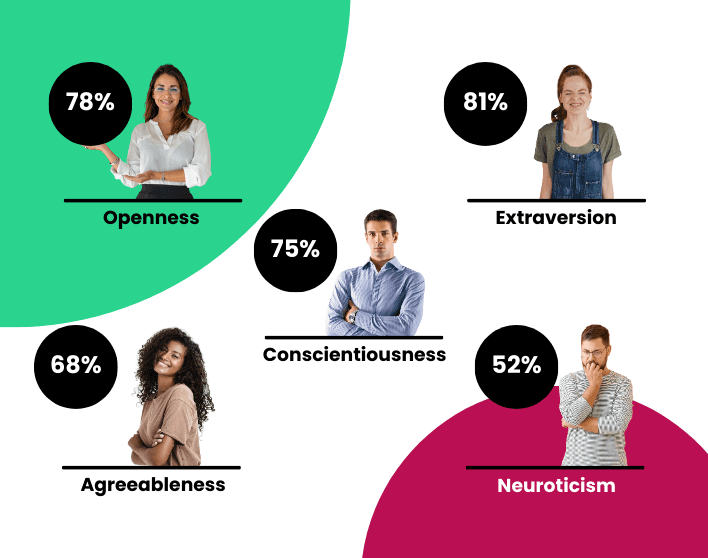The Bryq Team
HR Experts
Not only do you need to follow equal opportunity employment laws to adhere to the law, but because it is the right thing to do. Find out more about equal opportunity employment, what it is, and how to apply it in your business.
What is Equal Opportunity Employment?
The best place to start is by defining what equal opportunity employment is. It is the idea that you should not discriminate when hiring, managing, or working with people. Traits that you should not discriminate against include genetic information such as race or gender.
List of traits you should not discriminate against:
race
sexual orientation
age
disability
religion
gender
pregnancy
color
national origin
You also cannot discriminate against people for complaining about discrimination, or if they are suing for discrimination.
Why is Equal Opportunity Employment Important?
A lucky few people live their lives never considering whether they have been discriminated against. However, racism, sexism, ageism, and other forms of discrimination are, unfortunately, an everyday reality for millions of people across the world.
That’s why in America and other countries, there are federal laws against this. Everybody should have an equal opportunity to get hired. Hiring decisions should be made on the person’s ability to do the job. Factors such as education and experience may convey this, but gender or race certainly don’t.
How Is Equal Employment Opportunity Enforced?
You may be interested to know that equal opportunity employment is enforced. That’s what the Equal Employment Opportunity Commission (EEOC) is in charge of – tracking down and stamping out employment discrimination.
The process is that a person who claims they are the subject of discrimination will go to the EEOC. It is the EEOC’s job to investigate claims and see if they have any merit. If so, then the EEOC will try to settle the claim but otherwise can sue the employer.
Employment Discrimination Examples
You have to adopt an equal opportunity employment approach at all times in the workplace, not just when you’re hiring new staff. The trick as a manager or HR person is to know how to apply these laws effectively in your workplace. Here are some examples of instances where employees may be discriminated against.
Harassment
Harassment is the most obvious example because it generally happens intentionally. Harassment could include teasing someone because they have a disability. This is wrong, and the person would have a case to potentially sue your company if this occurred.
Disparate Treatment
Disparate treatment refers to treating staff inequitably. This could be when you’re restructuring and have to make some staff redundant. Some managers might choose to make someone redundant based on the fact that they are already near retirement age and will leave soon anyway. However, this is discrimination and goes against equal opportunity employment values.
Opportunities
When a manager has the chance to promote a staff member or offer training opportunities, they must make sure to do this fairly. Not offering training to a top-performing staff member because she is pregnant, for example, is discrimination. The same goes for not offering a promotion opportunity to someone because they are older or because of where they come from. Instead, promote or offer training based on the merits of the staff member and nothing else.
Wages
Another example of an equal opportunity employment issue is wages. Paying someone less because of discrimination is unacceptable. If someone is doing the same work just as well as another staff member, they should be getting paid the same for that work. That’s regardless of gender, age, and other factors.
How to Apply Equal Employment Opportunity (EEO) Laws in the Hiring Process
One of the main instances where discrimination can occur is during the hiring process. So, make sure that when hiring, you don’t take into account age, gender, or anything else that features on the list of traits you must not discriminate against.
One way of ensuring this is by using blind recruitment processes. Blind recruitment is when you get all identifying details removed from job applications and resumes. This helps you to completely remove all of these factors that aren’t relevant to the position from the equation. Instead, you end up hiring simply on skills and experience, as you should. Many companies have found this an extremely effective method of both adhering to EOE laws as well as hiring a diverse range of people.
Factors that may be removed during a blind recruitment process include:
Person’s name – because this may offer a clue as to their gender or ethnicity
Age – age discrimination is illegal. It may require factors such as date of qualification removed from a resume because this can hint at a person’s age
Education – you are technically allowed to discriminate based on where someone obtained their qualification. However, is this valid? Many people think it’s not, so they have the place of education removed
Interests – interests should not affect whether you hire someone, so are often removed in blind recruitment but technically you could discriminate based on interests
Gender –you should not reject an applicant based on their gender
Ethnicity – most people don’t put ethnicity on their resume, but if they do it should be removed for a blind recruitment process
You may have more factors that you would like removed from the resumes of job applicants. Just make sure that you keep in the important things that you will base your decision on. This should include experience and skills or abilities.
As you don’t know the person’s gender, race, or anything else until they come in for the interview, the shortlisting process is bias-free. To do this, simply ask an administrator or someone else not involved in the hiring process to go through and remove these details. They will need to number the applicants and keep track of who is who. Or you can purchase software that automatically does this for you.
Adhering to equal opportunity employment laws is not difficult. Just behave morally and fairly and promote people, hire, or offer opportunities based on the skills and abilities of the person. A blind recruitment process will enable you to take bias out of the recruitment process and hire some fantastic people for your organization.









